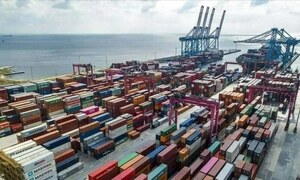Asian emerging market currencies from export-dependent economies rose against the dollar on Monday as signs the planned US-North Korea summit would proceed supported confidence in global trade although price action elsewhere was limited.
South Korea's won and the Taiwan dollar were the best performers in Asia, standing to benefit from stable international relations due to the heavy reliance on exports. "As long as discussions are going on, things are good," said Stephen Innes, head of Asia-Pacific trading for Oanda.
The South Korean won and the Taiwan dollar firmed 0.33 percent and 0.15 percent, respectively. The Singapore dollar was 0.04 percent stronger.
Taiwan-listed equities gained the most in more than three months on Monday and were trading about 1.5 percent higher, with information technology stocks driving broad-based gains.
China's foreign ministry said on Saturday that it was happy to see that progress had been made on the US-North Korean summit, which is due to be held on June 12 in Singapore.
US Defense Secretary Jim Mattis said the US is willing to work with China on a "results-oriented" relationship.
The greenback gained against other currencies in the region, however, after it received support from strong jobs data released on Friday. Data showed US job growth accelerated in May, with the unemployment rate dropping to an 18-year low of 3.8 percent, pointing to rapidly tightening labour market conditions, which could stir concerns about inflation.
Thailand's baht weakened about 0.1 percent on Monday. The Indian rupee marked time while the Chinese yuan slipped slightly. Indonesia's rupiah was flat after data released on Monday showed the annual inflation slowed in May with only a modest increase in food prices despite rising demand during the Muslim fasting month of Ramadan.
The Philippine peso was the region's biggest loser, slipping 0.17 percent.
The country is due to publish inflation data on Tuesday, with a Reuters poll showing Philippine inflation likely accelerated for the fifth straight month in May. Inflation worries have been a major factor in the peso losing more than 5 percent of its value since the start of the year.
BR100
11,841
Decreased By
-24.6 (-0.21%)
BR30
35,821
Increased By
124.3 (0.35%)
KSE100
113,774
Decreased By
-374.4 (-0.33%)
KSE30
35,821
Decreased By
-131 (-0.36%)

























Comments
Comments are closed.